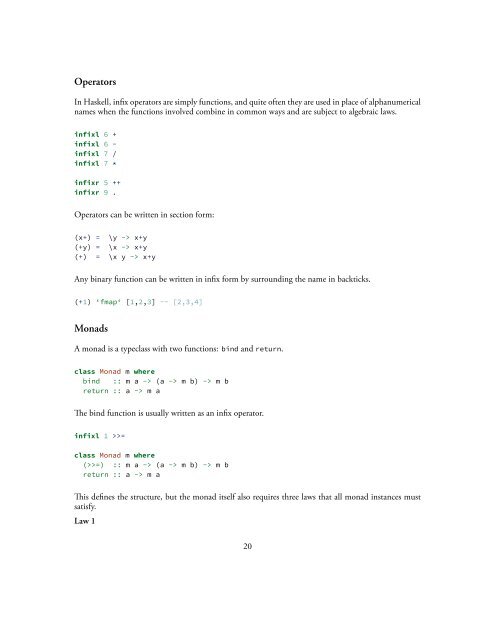Create successful ePaper yourself
Turn your PDF publications into a flip-book with our unique Google optimized e-Paper software.
Operators<br />
In <strong>Haskell</strong>, infix operators are simply functions, and quite often they are used in place of alphanumerical<br />
names when the functions involved combine in common ways and are subject to algebraic laws.<br />
infixl 6 +<br />
infixl 6 -<br />
infixl 7 /<br />
infixl 7 *<br />
infixr 5 ++<br />
infixr 9 .<br />
Operators can be written in section form:<br />
(x+) = \y -> x+y<br />
(+y) = \x -> x+y<br />
(+) = \x y -> x+y<br />
Any binary function can be written in infix form by surrounding the name in backticks.<br />
(+1) ‘fmap‘ [1,2,3] -- [2,3,4]<br />
Monads<br />
A monad is a typeclass with two functions: bind and return.<br />
class Monad m where<br />
bind :: m a -> (a -> m b) -> m b<br />
return :: a -> m a<br />
e bind function is usually written as an infix operator.<br />
infixl 1 >>=<br />
class Monad m where<br />
(>>=) :: m a -> (a -> m b) -> m b<br />
return :: a -> m a<br />
is defines the structure, but the monad itself also requires three laws that all monad instances must<br />
satisfy.<br />
Law 1<br />
20


